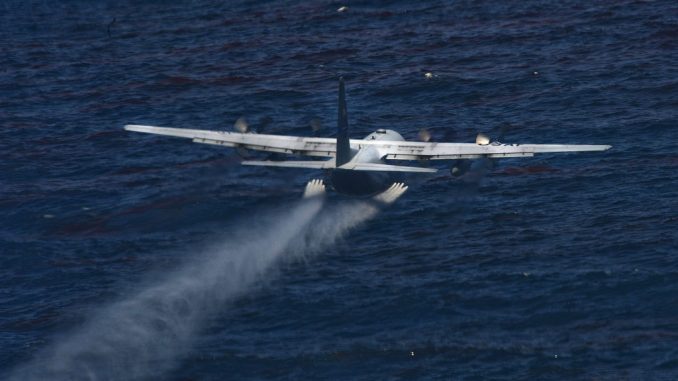
Following the Deepwater Horizon oil spill in 2010, the oil giant BP started spraying the ocean with the toxic dispersant Corexit.
It looks like the 7 million litres of chemical dispersant may have done more harm than good.

BYPASS THE CENSORS
Sign up to get unfiltered news delivered straight to your inbox.
You can unsubscribe any time. By subscribing you agree to our Terms of Use
Latest Video
At the time Corexit was touted by BP and others as an important part of the oil industry’s response to the spill as it was supposed to assist natural microbes break down the oil faster. However, while it removed oil from the Gulf of Mexico’s surface it did not fully degrade it and actually interfered with oil-munching microbes’ ability to remove the slick.
Common Dreams reports:
Critics always pointed out that it was more about the industry trying to get the oil out of sight and therefore out of mind, rather than actually cleaning up the spill.
And new research, published in the Proceedings of the National Academy of Sciences, reveals that Corexit did not help microbes which break down the oil, and in some cases even “inhibited” an oil-eating bacteria and slowed its ability to degrade oil.
Samantha Joye, a marine scientist from the University of Georgia, examined some 50,000 species of bacteria from the Gulf and how they reacted to oil, dispersants and Gulf of Mexico sea water in the lab. “The goal was to recreate the Deepwater plume as best we could,” says Joye.
She argues that no one at the time monitored the effects of the dispersant in the Gulf. And her research backs up Ott’s original concerns. “The dispersants did a great job in that they got the oil off the surface,” says Joye. “What you see is the dispersants didn’t ramp up biodegradation.”
Ironically the oil with no dispersant “degraded a lot faster than the oil with dispersants“, she argues before adding: “You could argue that it would have been better if we had left the organisms alone.”
Another scientist, Jack Gilbert from the University of Chicago concludes “this work is a wonderful proof of the inefficacy of [Corexit]. It’s also another example of why it is always better to test the microbial system you wish to exploit prior to widespread application of a compound.”
Indeed, Corexit was such a failure that a significant amount of the oil from the spill may still be on the sea floor. “We really can’t account for 24 to 55 percent of the oil. Where is it? I don’t know and it really bothers me” says Joye. “I suspect that some is in marshes, some is on beaches, and probably more than we think is on the seafloor.”
Joye has now cautioned against using Corexit in future: “Nobody wants to see oiled birds, turtles, and dolphins, but the bottom line is that if you disperse that oil, it’s still in the water. You feel better, but is it improving the situation? My gut instinct is that I would put my faith in the microbial communities to do their job.”


